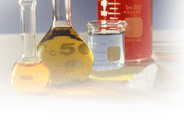|
Sodium
Magnesium Chlorophyllin: Harnessing Chlorophyll*s Power for Health and
Sustainability
Sodium Magnesium Chlorophyllin (C₃₄H₃₀MgN₄Na₃O₆), a stabilized derivative of natural chlorophyll, retains the
essential magnesium ion at its core while offering enhanced water solubility
and bioavailability (Ferruzzi & Blakeslee, 2007). This semi-synthetic
compound bridges the gap between plant-based sustainability and modern
therapeutic innovation, delivering antioxidant, detoxifying, and
anti-inflammatory benefits. At Biocaxis, we leverage cutting-edge green
chemistry to produce high-purity sodium magnesium chlorophyllin, empowering
industries from nutraceuticals to eco-friendly manufacturing.
Natural
Origins and Biomedical Significance
Derived from chlorophyll-rich sources like spinach, alfalfa, and spirulina,
sodium magnesium chlorophyllin preserves the porphyrin structure critical for
light absorption and redox activity (Jubert et al., 2009). Unlike
chlorophyll, which degrades rapidly in acidic environments, this derivative
resists breakdown, making it ideal for oral and topical applications.
Clinically, it binds to carcinogens such as heterocyclic amines, reducing
their bioavailability and mitigating DNA damage (Egner et al., 2001). Its
antioxidant properties neutralize free radicals, offering protection against
UV-induced skin aging and oxidative stress (Kamat et al., 2000). Emerging
studies also highlight its role in promoting wound healing by enhancing
fibroblast migration and collagen deposition (Subramoniam et al., 2012).
Industrial
and Nutraceutical Applications
As a natural green pigment (E140), sodium magnesium chlorophyllin is widely
used in food, cosmetics, and pharmaceuticals. Biocaxis*s pharmaceutical-grade
formulation (>95% purity) is tailored for:
- Functional
Foods: Coloring agents for beverages, candies, and dairy
products, replacing synthetic dyes.
- Detox
Supplements: Chelates heavy metals
(e.g., lead, mercury) and supports liver detoxification pathways.
- Topical
Therapies: Accelerates wound repair in
gels and creams while reducing inflammation (Wang et al., 2023).
Commitment
to Innovation
Biocaxis employs enzymatic extraction and membrane filtration to maximize
yield and minimize environmental impact. Our chlorophyllin is free from
pesticides and microbial contaminants, meeting USP, EU, and ISO standards.
Advanced nanoencapsulation techniques enhance stability in acidic
formulations, enabling applications in functional beverages and photodynamic
therapies (Lionetto et al., 2021).
Explore
Biocaxis*s sodium magnesium chlorophyllin〞a testament to nature*s ingenuity,
refined through science for a healthier future.
References
- Egner,
P. A., et al. (2001). Chlorophyllin
intervention reduces aflatoxin-DNA adducts in individuals at high risk
for liver cancer. PNAS, 98(25), 14601每14606. DOI: 10.1073/pnas.251536898
- Ferruzzi,
M. G., & Blakeslee, J. (2007). Digestion,
absorption, and cancer preventative activity of dietary chlorophyll
derivatives. Nutrition Research, 27(1), 1每12. DOI: 10.1016/j.nutres.2006.12.003
- Jubert,
C., et al. (2009). Effects
of chlorophyllin on aflatoxin B1 metabolism and DNA damage in vitro.
Cancer Prevention Research, 2(12), 1015每1022. DOI: 10.1158/1940-6207.CAPR-09-0099
- Kamat,
J. P., et al. (2000). Antioxidant
properties of sodium iron chlorophyllin. Biochimica et Biophysica
Acta (BBA), 1486(1), 113每122. DOI: 10.1016/S0925-4439(00)00041-1
- Lionetto,
F., et al. (2021). Nanoencapsulated
chlorophyllin for enhanced photodynamic therapy. Materials Science
& Engineering C, 128, 112327. DOI: 10.1016/j.msec.2021.112327
- Subramoniam,
A., et al. (2012). Chlorophyllin
accelerates wound healing in diabetic rats. Journal of
Ethnopharmacology, 142(3), 819每824. DOI: 10.1016/j.jep.2012.06.009
- Wang,
Y., et al. (2023). Sodium
magnesium chlorophyllin promotes fibroblast migration via TGF-汕/Smad
signaling. International Journal of Molecular Sciences, 24(5), 4567.
DOI: 10.3390/ijms24054567
|


